Today for my last day of tweeting, I want to talk about highlights from #MarsExpress & later from @esamarswebcam! This thread will be some highlights from the mission as a whole  https://abs.twimg.com/emoji/v2/... draggable="false" alt="🙂" title="Slightly smiling face" aria-label="Emoji: Slightly smiling face">
https://abs.twimg.com/emoji/v2/... draggable="false" alt="🙂" title="Slightly smiling face" aria-label="Emoji: Slightly smiling face"> https://abs.twimg.com/emoji/v2/... draggable="false" alt="🔴" title="Red circle" aria-label="Emoji: Red circle">
https://abs.twimg.com/emoji/v2/... draggable="false" alt="🔴" title="Red circle" aria-label="Emoji: Red circle"> https://abs.twimg.com/emoji/v2/... draggable="false" alt="🛰️" title="Satellite" aria-label="Emoji: Satellite">. This fantastic image is from HRSC
https://abs.twimg.com/emoji/v2/... draggable="false" alt="🛰️" title="Satellite" aria-label="Emoji: Satellite">. This fantastic image is from HRSC  https://abs.twimg.com/emoji/v2/... draggable="false" alt="📸" title="Camera with flash" aria-label="Emoji: Camera with flash"> https://www.dlr.de/content/en/articles/news/2019/03/20190919_mars-marvellous-from-north-pole-to-southern-highlands.html">https://www.dlr.de/content/e... (
https://abs.twimg.com/emoji/v2/... draggable="false" alt="📸" title="Camera with flash" aria-label="Emoji: Camera with flash"> https://www.dlr.de/content/en/articles/news/2019/03/20190919_mars-marvellous-from-north-pole-to-southern-highlands.html">https://www.dlr.de/content/e... ( https://abs.twimg.com/emoji/v2/... draggable="false" alt="📷" title="Camera" aria-label="Emoji: Camera">: ESA/DLR/FU Berlin)
https://abs.twimg.com/emoji/v2/... draggable="false" alt="📷" title="Camera" aria-label="Emoji: Camera">: ESA/DLR/FU Berlin)
(I talked about the background of the #MarsExpress mission in this thread a few days ago). Now, onto some science/mission/fun highlights!  https://abs.twimg.com/emoji/v2/... draggable="false" alt="🌌" title="Milky Way" aria-label="Emoji: Milky Way">
https://abs.twimg.com/emoji/v2/... draggable="false" alt="🌌" title="Milky Way" aria-label="Emoji: Milky Way"> https://abs.twimg.com/emoji/v2/... draggable="false" alt="🔴" title="Red circle" aria-label="Emoji: Red circle">
https://abs.twimg.com/emoji/v2/... draggable="false" alt="🔴" title="Red circle" aria-label="Emoji: Red circle"> https://abs.twimg.com/emoji/v2/... draggable="false" alt="🛰️" title="Satellite" aria-label="Emoji: Satellite"> https://twitter.com/People_Of_Space/status/1262093239429013508?s=20">https://twitter.com/People_Of...
https://abs.twimg.com/emoji/v2/... draggable="false" alt="🛰️" title="Satellite" aria-label="Emoji: Satellite"> https://twitter.com/People_Of_Space/status/1262093239429013508?s=20">https://twitter.com/People_Of...
First, a fun one! (sorry for *spoilers*!!  https://abs.twimg.com/emoji/v2/... draggable="false" alt="🙈" title="See-no-evil monkey" aria-label="Emoji: See-no-evil monkey">) Following on from me declaring my love for & #39;The Martian& #39; yesterday, HRSC
https://abs.twimg.com/emoji/v2/... draggable="false" alt="🙈" title="See-no-evil monkey" aria-label="Emoji: See-no-evil monkey">) Following on from me declaring my love for & #39;The Martian& #39; yesterday, HRSC  https://abs.twimg.com/emoji/v2/... draggable="false" alt="📸" title="Camera with flash" aria-label="Emoji: Camera with flash"> on #MarsExpress mapped out the route Mark Watney takes, and also reconstructed that journey in 3D! (
https://abs.twimg.com/emoji/v2/... draggable="false" alt="📸" title="Camera with flash" aria-label="Emoji: Camera with flash"> on #MarsExpress mapped out the route Mark Watney takes, and also reconstructed that journey in 3D! ( https://abs.twimg.com/emoji/v2/... draggable="false" alt="📷" title="Camera" aria-label="Emoji: Camera">: ESA/DLR/FU Berlin) https://www.youtube.com/watch?v=hxSVRnnd6dM&feature=youtu.be">https://www.youtube.com/watch... https://www.youtube.com/watch...
https://abs.twimg.com/emoji/v2/... draggable="false" alt="📷" title="Camera" aria-label="Emoji: Camera">: ESA/DLR/FU Berlin) https://www.youtube.com/watch?v=hxSVRnnd6dM&feature=youtu.be">https://www.youtube.com/watch... https://www.youtube.com/watch...
What about water on Mars? In 2018 the radar  https://abs.twimg.com/emoji/v2/... draggable="false" alt="📡" title="Satellite antenna" aria-label="Emoji: Satellite antenna"> instrument MARSIS on #MarsExpress detected evidence of a subglacial lake
https://abs.twimg.com/emoji/v2/... draggable="false" alt="📡" title="Satellite antenna" aria-label="Emoji: Satellite antenna"> instrument MARSIS on #MarsExpress detected evidence of a subglacial lake  https://abs.twimg.com/emoji/v2/... draggable="false" alt="⬇️" title="Downwards arrow" aria-label="Emoji: Downwards arrow"> the south polar cap!
https://abs.twimg.com/emoji/v2/... draggable="false" alt="⬇️" title="Downwards arrow" aria-label="Emoji: Downwards arrow"> the south polar cap!  https://abs.twimg.com/emoji/v2/... draggable="false" alt="💧" title="Droplet" aria-label="Emoji: Droplet"> The bright radar echo is interpreted as the interface between ice & a stable body of liquid (salty
https://abs.twimg.com/emoji/v2/... draggable="false" alt="💧" title="Droplet" aria-label="Emoji: Droplet"> The bright radar echo is interpreted as the interface between ice & a stable body of liquid (salty  https://abs.twimg.com/emoji/v2/... draggable="false" alt="🧂" title="Salt" aria-label="Emoji: Salt">) water! https://www.esa.int/Science_Exploration/Space_Science/Mars_Express/Mars_Express_detects_liquid_water_hidden_under_planet_s_south_pole">https://www.esa.int/Science_E...
https://abs.twimg.com/emoji/v2/... draggable="false" alt="🧂" title="Salt" aria-label="Emoji: Salt">) water! https://www.esa.int/Science_Exploration/Space_Science/Mars_Express/Mars_Express_detects_liquid_water_hidden_under_planet_s_south_pole">https://www.esa.int/Science_E...
Elsewhere, the #MarsExpress mission has also contributed significantly to the (controversial!) story of methane on Mars  https://abs.twimg.com/emoji/v2/... draggable="false" alt="🤯" title="Exploding head" aria-label="Emoji: Exploding head">. Methane was tentatively detected early in the MEX mission but remained controversial within the scientific community: https://www.esa.int/Science_Exploration/Space_Science/Mars_Express/Mars_methane_and_mysteries">https://www.esa.int/Science_E...
https://abs.twimg.com/emoji/v2/... draggable="false" alt="🤯" title="Exploding head" aria-label="Emoji: Exploding head">. Methane was tentatively detected early in the MEX mission but remained controversial within the scientific community: https://www.esa.int/Science_Exploration/Space_Science/Mars_Express/Mars_methane_and_mysteries">https://www.esa.int/Science_E...
Last year, the PFS instrument on #MarsExpress published an independent confirmation of a methane spike on Mars seen by @MarsCuriosity, and suggested a source region east of Gale Crater  https://abs.twimg.com/emoji/v2/... draggable="false" alt="🛰️" title="Satellite" aria-label="Emoji: Satellite">. Methane is interesting because it *could* be related to life
https://abs.twimg.com/emoji/v2/... draggable="false" alt="🛰️" title="Satellite" aria-label="Emoji: Satellite">. Methane is interesting because it *could* be related to life  https://abs.twimg.com/emoji/v2/... draggable="false" alt="🦠" title="Microbe" aria-label="Emoji: Microbe">
https://abs.twimg.com/emoji/v2/... draggable="false" alt="🦠" title="Microbe" aria-label="Emoji: Microbe"> https://abs.twimg.com/emoji/v2/... draggable="false" alt="👀" title="Eyes" aria-label="Emoji: Eyes"> https://twitter.com/esascience/status/1112744858576474114?s=20">https://twitter.com/esascienc...
https://abs.twimg.com/emoji/v2/... draggable="false" alt="👀" title="Eyes" aria-label="Emoji: Eyes"> https://twitter.com/esascience/status/1112744858576474114?s=20">https://twitter.com/esascienc...
I particularly liked this piece by @kchangnyt in the New York Times which discusses a new spike found by @MarsCuriosity in June 2019, but also details the methane story which includes the measurements from #MarsExpress  https://abs.twimg.com/emoji/v2/... draggable="false" alt="🔴" title="Red circle" aria-label="Emoji: Red circle">
https://abs.twimg.com/emoji/v2/... draggable="false" alt="🔴" title="Red circle" aria-label="Emoji: Red circle"> https://abs.twimg.com/emoji/v2/... draggable="false" alt="🛰️" title="Satellite" aria-label="Emoji: Satellite"> https://www.nytimes.com/2019/06/22/science/nasa-mars-rover-life.html">https://www.nytimes.com/2019/06/2...
https://abs.twimg.com/emoji/v2/... draggable="false" alt="🛰️" title="Satellite" aria-label="Emoji: Satellite"> https://www.nytimes.com/2019/06/22/science/nasa-mars-rover-life.html">https://www.nytimes.com/2019/06/2...
Another #MarsExpress highlight is the estimation of the current rate of atmospheric escape using data from the ASPERA instrument!  https://abs.twimg.com/emoji/v2/... draggable="false" alt="⚛️" title="Atom symbol" aria-label="Emoji: Atom symbol"> https://sci.esa.int/web/mars-express/-/51826-6-estimation-of-the-current-rate-of-atmospheric-escape">https://sci.esa.int/web/mars-... (Unfortunately Twitter botches the quality of videos, see it in better quality here: https://sci.esa.int/web/mars-express/-/44275-solar-wind-and-mars-atmosphere)">https://sci.esa.int/web/mars-... (
https://abs.twimg.com/emoji/v2/... draggable="false" alt="⚛️" title="Atom symbol" aria-label="Emoji: Atom symbol"> https://sci.esa.int/web/mars-express/-/51826-6-estimation-of-the-current-rate-of-atmospheric-escape">https://sci.esa.int/web/mars-... (Unfortunately Twitter botches the quality of videos, see it in better quality here: https://sci.esa.int/web/mars-express/-/44275-solar-wind-and-mars-atmosphere)">https://sci.esa.int/web/mars-... ( https://abs.twimg.com/emoji/v2/... draggable="false" alt="📽️" title="Film projector" aria-label="Emoji: Film projector">: ESA)
https://abs.twimg.com/emoji/v2/... draggable="false" alt="📽️" title="Film projector" aria-label="Emoji: Film projector">: ESA)
Investigations into atmospheric loss are important for determing how Mars lost its early atmosphere  https://abs.twimg.com/emoji/v2/... draggable="false" alt="🔴" title="Red circle" aria-label="Emoji: Red circle">. A & #39;warm & wet& #39; early Mars is evidenced by features we see today such as those present in this HRSC image of Arda Valles ( http://www.esa.int/Science_Exploration/Space_Science/Mars_Express/Footprints_of_a_martian_flood)">https://www.esa.int/Science_E... (
https://abs.twimg.com/emoji/v2/... draggable="false" alt="🔴" title="Red circle" aria-label="Emoji: Red circle">. A & #39;warm & wet& #39; early Mars is evidenced by features we see today such as those present in this HRSC image of Arda Valles ( http://www.esa.int/Science_Exploration/Space_Science/Mars_Express/Footprints_of_a_martian_flood)">https://www.esa.int/Science_E... ( https://abs.twimg.com/emoji/v2/... draggable="false" alt="📷" title="Camera" aria-label="Emoji: Camera">: ESA/DLR/FU Berlin)
https://abs.twimg.com/emoji/v2/... draggable="false" alt="📷" title="Camera" aria-label="Emoji: Camera">: ESA/DLR/FU Berlin)
On the mission operations side of things, if you want to know more about how engineers like @marwood82 have kept #MarsExpress going for 16+ years ( https://abs.twimg.com/emoji/v2/... draggable="false" alt="🤯" title="Exploding head" aria-label="Emoji: Exploding head">) this is a great article by @richard_speed detailing that, including the switch to & #39;gyro-less& #39; mode!
https://abs.twimg.com/emoji/v2/... draggable="false" alt="🤯" title="Exploding head" aria-label="Emoji: Exploding head">) this is a great article by @richard_speed detailing that, including the switch to & #39;gyro-less& #39; mode!  https://abs.twimg.com/emoji/v2/... draggable="false" alt="🔴" title="Red circle" aria-label="Emoji: Red circle">
https://abs.twimg.com/emoji/v2/... draggable="false" alt="🔴" title="Red circle" aria-label="Emoji: Red circle"> https://abs.twimg.com/emoji/v2/... draggable="false" alt="🛰️" title="Satellite" aria-label="Emoji: Satellite"> https://www.theregister.co.uk/2020/03/31/mars_express/">https://www.theregister.co.uk/2020/03/3...
https://abs.twimg.com/emoji/v2/... draggable="false" alt="🛰️" title="Satellite" aria-label="Emoji: Satellite"> https://www.theregister.co.uk/2020/03/31/mars_express/">https://www.theregister.co.uk/2020/03/3...
I& #39;ll end with some of my favourite photos from HRSC, bc everyone loves pictures of Mars right?  https://abs.twimg.com/emoji/v2/... draggable="false" alt="😉" title="Winking face" aria-label="Emoji: Winking face">
https://abs.twimg.com/emoji/v2/... draggable="false" alt="😉" title="Winking face" aria-label="Emoji: Winking face"> https://abs.twimg.com/emoji/v2/... draggable="false" alt="🔴" title="Red circle" aria-label="Emoji: Red circle"> From upper left to bottom right: Perspective view of North Polar ice cap
https://abs.twimg.com/emoji/v2/... draggable="false" alt="🔴" title="Red circle" aria-label="Emoji: Red circle"> From upper left to bottom right: Perspective view of North Polar ice cap  https://abs.twimg.com/emoji/v2/... draggable="false" alt="❄️" title="Snowflake" aria-label="Emoji: Snowflake">; area near north pole; Olympus Mons Caldera
https://abs.twimg.com/emoji/v2/... draggable="false" alt="❄️" title="Snowflake" aria-label="Emoji: Snowflake">; area near north pole; Olympus Mons Caldera  https://abs.twimg.com/emoji/v2/... draggable="false" alt="🌋" title="Volcano" aria-label="Emoji: Volcano">; Dark dunes of Moreux crater (all
https://abs.twimg.com/emoji/v2/... draggable="false" alt="🌋" title="Volcano" aria-label="Emoji: Volcano">; Dark dunes of Moreux crater (all  https://abs.twimg.com/emoji/v2/... draggable="false" alt="📷" title="Camera" aria-label="Emoji: Camera">: ESA/DLR/FU Berlin)
https://abs.twimg.com/emoji/v2/... draggable="false" alt="📷" title="Camera" aria-label="Emoji: Camera">: ESA/DLR/FU Berlin)
More HRSC #MarsExpress photo highlights!  https://abs.twimg.com/emoji/v2/... draggable="false" alt="📸" title="Camera with flash" aria-label="Emoji: Camera with flash"> From upper left to bottom right: Perspective view of Korolev crater; view of Deuteronilus Mensae showing evidence for glacial activity
https://abs.twimg.com/emoji/v2/... draggable="false" alt="📸" title="Camera with flash" aria-label="Emoji: Camera with flash"> From upper left to bottom right: Perspective view of Korolev crater; view of Deuteronilus Mensae showing evidence for glacial activity  https://abs.twimg.com/emoji/v2/... draggable="false" alt="❄️" title="Snowflake" aria-label="Emoji: Snowflake">; Perspective view in Noctis Labyrinthus; Phobos (one of the Martian moons) (
https://abs.twimg.com/emoji/v2/... draggable="false" alt="❄️" title="Snowflake" aria-label="Emoji: Snowflake">; Perspective view in Noctis Labyrinthus; Phobos (one of the Martian moons) ( https://abs.twimg.com/emoji/v2/... draggable="false" alt="📷" title="Camera" aria-label="Emoji: Camera">: ESA/DLR/FU Berlin)
https://abs.twimg.com/emoji/v2/... draggable="false" alt="📷" title="Camera" aria-label="Emoji: Camera">: ESA/DLR/FU Berlin)
So, tldr; #MarsExpress mission highlights include the detection of a subglacial lake; detection of a methane spike; investigations into atmospheric escape on Mars; moving to a new & #39;gyroless& #39; mode to extend the mission; and awesome pictures of Mars!!  https://abs.twimg.com/emoji/v2/... draggable="false" alt="😀" title="Grinning face" aria-label="Emoji: Grinning face">
https://abs.twimg.com/emoji/v2/... draggable="false" alt="😀" title="Grinning face" aria-label="Emoji: Grinning face"> https://abs.twimg.com/emoji/v2/... draggable="false" alt="🔴" title="Red circle" aria-label="Emoji: Red circle">
https://abs.twimg.com/emoji/v2/... draggable="false" alt="🔴" title="Red circle" aria-label="Emoji: Red circle"> https://abs.twimg.com/emoji/v2/... draggable="false" alt="🛰️" title="Satellite" aria-label="Emoji: Satellite"> https://www.esa.int/Science_Exploration/Space_Science/Mars_Express">https://www.esa.int/Science_E...
https://abs.twimg.com/emoji/v2/... draggable="false" alt="🛰️" title="Satellite" aria-label="Emoji: Satellite"> https://www.esa.int/Science_Exploration/Space_Science/Mars_Express">https://www.esa.int/Science_E...

 Read on Twitter
Read on Twitter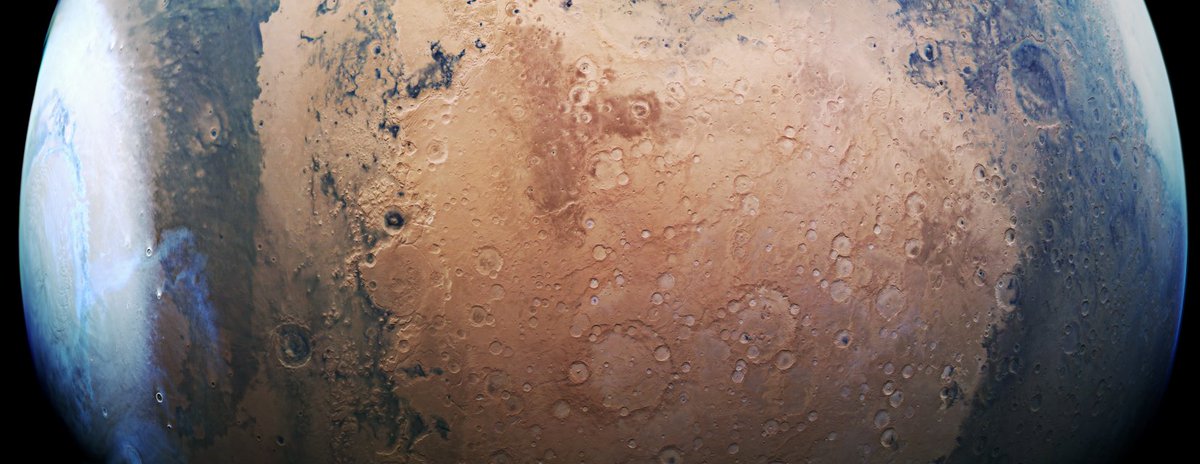 https://abs.twimg.com/emoji/v2/... draggable="false" alt="🔴" title="Red circle" aria-label="Emoji: Red circle">https://abs.twimg.com/emoji/v2/... draggable="false" alt="🛰️" title="Satellite" aria-label="Emoji: Satellite">. This fantastic image is from HRSC https://abs.twimg.com/emoji/v2/... draggable="false" alt="📸" title="Camera with flash" aria-label="Emoji: Camera with flash"> https://www.dlr.de/content/e... (https://abs.twimg.com/emoji/v2/... draggable="false" alt="📷" title="Camera" aria-label="Emoji: Camera">: ESA/DLR/FU Berlin)" title="Today for my last day of tweeting, I want to talk about highlights from #MarsExpress & later from @esamarswebcam! This thread will be some highlights from the mission as a whole https://abs.twimg.com/emoji/v2/... draggable="false" alt="🙂" title="Slightly smiling face" aria-label="Emoji: Slightly smiling face">https://abs.twimg.com/emoji/v2/... draggable="false" alt="🔴" title="Red circle" aria-label="Emoji: Red circle">https://abs.twimg.com/emoji/v2/... draggable="false" alt="🛰️" title="Satellite" aria-label="Emoji: Satellite">. This fantastic image is from HRSC https://abs.twimg.com/emoji/v2/... draggable="false" alt="📸" title="Camera with flash" aria-label="Emoji: Camera with flash"> https://www.dlr.de/content/e... (https://abs.twimg.com/emoji/v2/... draggable="false" alt="📷" title="Camera" aria-label="Emoji: Camera">: ESA/DLR/FU Berlin)" class="img-responsive" style="max-width:100%;"/>
https://abs.twimg.com/emoji/v2/... draggable="false" alt="🔴" title="Red circle" aria-label="Emoji: Red circle">https://abs.twimg.com/emoji/v2/... draggable="false" alt="🛰️" title="Satellite" aria-label="Emoji: Satellite">. This fantastic image is from HRSC https://abs.twimg.com/emoji/v2/... draggable="false" alt="📸" title="Camera with flash" aria-label="Emoji: Camera with flash"> https://www.dlr.de/content/e... (https://abs.twimg.com/emoji/v2/... draggable="false" alt="📷" title="Camera" aria-label="Emoji: Camera">: ESA/DLR/FU Berlin)" title="Today for my last day of tweeting, I want to talk about highlights from #MarsExpress & later from @esamarswebcam! This thread will be some highlights from the mission as a whole https://abs.twimg.com/emoji/v2/... draggable="false" alt="🙂" title="Slightly smiling face" aria-label="Emoji: Slightly smiling face">https://abs.twimg.com/emoji/v2/... draggable="false" alt="🔴" title="Red circle" aria-label="Emoji: Red circle">https://abs.twimg.com/emoji/v2/... draggable="false" alt="🛰️" title="Satellite" aria-label="Emoji: Satellite">. This fantastic image is from HRSC https://abs.twimg.com/emoji/v2/... draggable="false" alt="📸" title="Camera with flash" aria-label="Emoji: Camera with flash"> https://www.dlr.de/content/e... (https://abs.twimg.com/emoji/v2/... draggable="false" alt="📷" title="Camera" aria-label="Emoji: Camera">: ESA/DLR/FU Berlin)" class="img-responsive" style="max-width:100%;"/>
 ) Following on from me declaring my love for & #39;The Martian& #39; yesterday, HRSC https://abs.twimg.com/emoji/v2/... draggable="false" alt="📸" title="Camera with flash" aria-label="Emoji: Camera with flash"> on #MarsExpress mapped out the route Mark Watney takes, and also reconstructed that journey in 3D! (https://abs.twimg.com/emoji/v2/... draggable="false" alt="📷" title="Camera" aria-label="Emoji: Camera">: ESA/DLR/FU Berlin) https://www.youtube.com/watch... https://www.youtube.com/watch..." title="First, a fun one! (sorry for *spoilers*!! https://abs.twimg.com/emoji/v2/... draggable="false" alt="🙈" title="See-no-evil monkey" aria-label="Emoji: See-no-evil monkey">) Following on from me declaring my love for & #39;The Martian& #39; yesterday, HRSC https://abs.twimg.com/emoji/v2/... draggable="false" alt="📸" title="Camera with flash" aria-label="Emoji: Camera with flash"> on #MarsExpress mapped out the route Mark Watney takes, and also reconstructed that journey in 3D! (https://abs.twimg.com/emoji/v2/... draggable="false" alt="📷" title="Camera" aria-label="Emoji: Camera">: ESA/DLR/FU Berlin) https://www.youtube.com/watch... https://www.youtube.com/watch..." class="img-responsive" style="max-width:100%;"/>
) Following on from me declaring my love for & #39;The Martian& #39; yesterday, HRSC https://abs.twimg.com/emoji/v2/... draggable="false" alt="📸" title="Camera with flash" aria-label="Emoji: Camera with flash"> on #MarsExpress mapped out the route Mark Watney takes, and also reconstructed that journey in 3D! (https://abs.twimg.com/emoji/v2/... draggable="false" alt="📷" title="Camera" aria-label="Emoji: Camera">: ESA/DLR/FU Berlin) https://www.youtube.com/watch... https://www.youtube.com/watch..." title="First, a fun one! (sorry for *spoilers*!! https://abs.twimg.com/emoji/v2/... draggable="false" alt="🙈" title="See-no-evil monkey" aria-label="Emoji: See-no-evil monkey">) Following on from me declaring my love for & #39;The Martian& #39; yesterday, HRSC https://abs.twimg.com/emoji/v2/... draggable="false" alt="📸" title="Camera with flash" aria-label="Emoji: Camera with flash"> on #MarsExpress mapped out the route Mark Watney takes, and also reconstructed that journey in 3D! (https://abs.twimg.com/emoji/v2/... draggable="false" alt="📷" title="Camera" aria-label="Emoji: Camera">: ESA/DLR/FU Berlin) https://www.youtube.com/watch... https://www.youtube.com/watch..." class="img-responsive" style="max-width:100%;"/>
 instrument MARSIS on #MarsExpress detected evidence of a subglacial lake https://abs.twimg.com/emoji/v2/... draggable="false" alt="⬇️" title="Downwards arrow" aria-label="Emoji: Downwards arrow"> the south polar cap! https://abs.twimg.com/emoji/v2/... draggable="false" alt="💧" title="Droplet" aria-label="Emoji: Droplet"> The bright radar echo is interpreted as the interface between ice & a stable body of liquid (salty https://abs.twimg.com/emoji/v2/... draggable="false" alt="🧂" title="Salt" aria-label="Emoji: Salt">) water! https://www.esa.int/Science_E..." title="What about water on Mars? In 2018 the radar https://abs.twimg.com/emoji/v2/... draggable="false" alt="📡" title="Satellite antenna" aria-label="Emoji: Satellite antenna"> instrument MARSIS on #MarsExpress detected evidence of a subglacial lake https://abs.twimg.com/emoji/v2/... draggable="false" alt="⬇️" title="Downwards arrow" aria-label="Emoji: Downwards arrow"> the south polar cap! https://abs.twimg.com/emoji/v2/... draggable="false" alt="💧" title="Droplet" aria-label="Emoji: Droplet"> The bright radar echo is interpreted as the interface between ice & a stable body of liquid (salty https://abs.twimg.com/emoji/v2/... draggable="false" alt="🧂" title="Salt" aria-label="Emoji: Salt">) water! https://www.esa.int/Science_E..." class="img-responsive" style="max-width:100%;"/>
instrument MARSIS on #MarsExpress detected evidence of a subglacial lake https://abs.twimg.com/emoji/v2/... draggable="false" alt="⬇️" title="Downwards arrow" aria-label="Emoji: Downwards arrow"> the south polar cap! https://abs.twimg.com/emoji/v2/... draggable="false" alt="💧" title="Droplet" aria-label="Emoji: Droplet"> The bright radar echo is interpreted as the interface between ice & a stable body of liquid (salty https://abs.twimg.com/emoji/v2/... draggable="false" alt="🧂" title="Salt" aria-label="Emoji: Salt">) water! https://www.esa.int/Science_E..." title="What about water on Mars? In 2018 the radar https://abs.twimg.com/emoji/v2/... draggable="false" alt="📡" title="Satellite antenna" aria-label="Emoji: Satellite antenna"> instrument MARSIS on #MarsExpress detected evidence of a subglacial lake https://abs.twimg.com/emoji/v2/... draggable="false" alt="⬇️" title="Downwards arrow" aria-label="Emoji: Downwards arrow"> the south polar cap! https://abs.twimg.com/emoji/v2/... draggable="false" alt="💧" title="Droplet" aria-label="Emoji: Droplet"> The bright radar echo is interpreted as the interface between ice & a stable body of liquid (salty https://abs.twimg.com/emoji/v2/... draggable="false" alt="🧂" title="Salt" aria-label="Emoji: Salt">) water! https://www.esa.int/Science_E..." class="img-responsive" style="max-width:100%;"/>
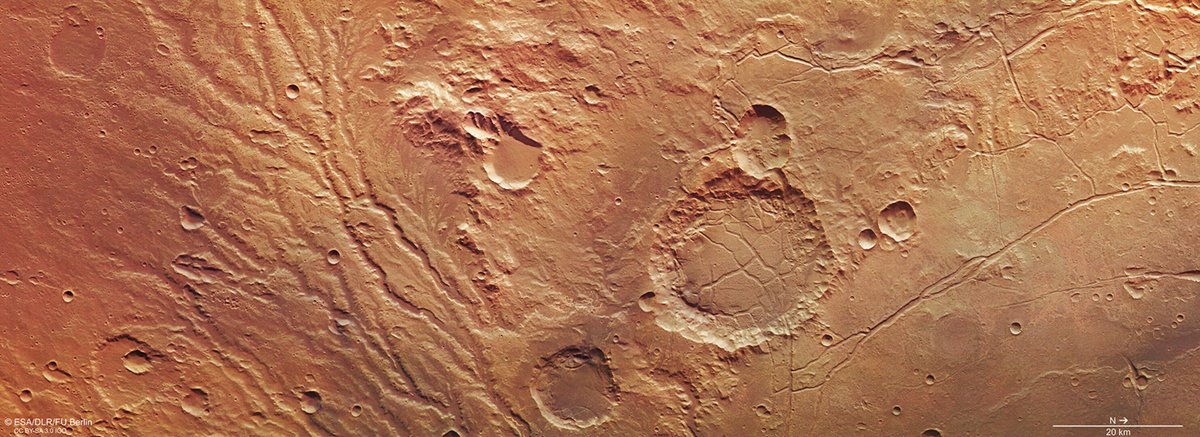 . A & #39;warm & wet& #39; early Mars is evidenced by features we see today such as those present in this HRSC image of Arda Valles ( https://www.esa.int/Science_E... (https://abs.twimg.com/emoji/v2/... draggable="false" alt="📷" title="Camera" aria-label="Emoji: Camera">: ESA/DLR/FU Berlin)" title="Investigations into atmospheric loss are important for determing how Mars lost its early atmosphere https://abs.twimg.com/emoji/v2/... draggable="false" alt="🔴" title="Red circle" aria-label="Emoji: Red circle">. A & #39;warm & wet& #39; early Mars is evidenced by features we see today such as those present in this HRSC image of Arda Valles ( https://www.esa.int/Science_E... (https://abs.twimg.com/emoji/v2/... draggable="false" alt="📷" title="Camera" aria-label="Emoji: Camera">: ESA/DLR/FU Berlin)" class="img-responsive" style="max-width:100%;"/>
. A & #39;warm & wet& #39; early Mars is evidenced by features we see today such as those present in this HRSC image of Arda Valles ( https://www.esa.int/Science_E... (https://abs.twimg.com/emoji/v2/... draggable="false" alt="📷" title="Camera" aria-label="Emoji: Camera">: ESA/DLR/FU Berlin)" title="Investigations into atmospheric loss are important for determing how Mars lost its early atmosphere https://abs.twimg.com/emoji/v2/... draggable="false" alt="🔴" title="Red circle" aria-label="Emoji: Red circle">. A & #39;warm & wet& #39; early Mars is evidenced by features we see today such as those present in this HRSC image of Arda Valles ( https://www.esa.int/Science_E... (https://abs.twimg.com/emoji/v2/... draggable="false" alt="📷" title="Camera" aria-label="Emoji: Camera">: ESA/DLR/FU Berlin)" class="img-responsive" style="max-width:100%;"/>
 https://abs.twimg.com/emoji/v2/... draggable="false" alt="🔴" title="Red circle" aria-label="Emoji: Red circle"> From upper left to bottom right: Perspective view of North Polar ice cap https://abs.twimg.com/emoji/v2/... draggable="false" alt="❄️" title="Snowflake" aria-label="Emoji: Snowflake">; area near north pole; Olympus Mons Caldera https://abs.twimg.com/emoji/v2/... draggable="false" alt="🌋" title="Volcano" aria-label="Emoji: Volcano">; Dark dunes of Moreux crater (all https://abs.twimg.com/emoji/v2/... draggable="false" alt="📷" title="Camera" aria-label="Emoji: Camera">: ESA/DLR/FU Berlin)" title="I& #39;ll end with some of my favourite photos from HRSC, bc everyone loves pictures of Mars right? https://abs.twimg.com/emoji/v2/... draggable="false" alt="😉" title="Winking face" aria-label="Emoji: Winking face">https://abs.twimg.com/emoji/v2/... draggable="false" alt="🔴" title="Red circle" aria-label="Emoji: Red circle"> From upper left to bottom right: Perspective view of North Polar ice cap https://abs.twimg.com/emoji/v2/... draggable="false" alt="❄️" title="Snowflake" aria-label="Emoji: Snowflake">; area near north pole; Olympus Mons Caldera https://abs.twimg.com/emoji/v2/... draggable="false" alt="🌋" title="Volcano" aria-label="Emoji: Volcano">; Dark dunes of Moreux crater (all https://abs.twimg.com/emoji/v2/... draggable="false" alt="📷" title="Camera" aria-label="Emoji: Camera">: ESA/DLR/FU Berlin)">
https://abs.twimg.com/emoji/v2/... draggable="false" alt="🔴" title="Red circle" aria-label="Emoji: Red circle"> From upper left to bottom right: Perspective view of North Polar ice cap https://abs.twimg.com/emoji/v2/... draggable="false" alt="❄️" title="Snowflake" aria-label="Emoji: Snowflake">; area near north pole; Olympus Mons Caldera https://abs.twimg.com/emoji/v2/... draggable="false" alt="🌋" title="Volcano" aria-label="Emoji: Volcano">; Dark dunes of Moreux crater (all https://abs.twimg.com/emoji/v2/... draggable="false" alt="📷" title="Camera" aria-label="Emoji: Camera">: ESA/DLR/FU Berlin)" title="I& #39;ll end with some of my favourite photos from HRSC, bc everyone loves pictures of Mars right? https://abs.twimg.com/emoji/v2/... draggable="false" alt="😉" title="Winking face" aria-label="Emoji: Winking face">https://abs.twimg.com/emoji/v2/... draggable="false" alt="🔴" title="Red circle" aria-label="Emoji: Red circle"> From upper left to bottom right: Perspective view of North Polar ice cap https://abs.twimg.com/emoji/v2/... draggable="false" alt="❄️" title="Snowflake" aria-label="Emoji: Snowflake">; area near north pole; Olympus Mons Caldera https://abs.twimg.com/emoji/v2/... draggable="false" alt="🌋" title="Volcano" aria-label="Emoji: Volcano">; Dark dunes of Moreux crater (all https://abs.twimg.com/emoji/v2/... draggable="false" alt="📷" title="Camera" aria-label="Emoji: Camera">: ESA/DLR/FU Berlin)">
 https://abs.twimg.com/emoji/v2/... draggable="false" alt="🔴" title="Red circle" aria-label="Emoji: Red circle"> From upper left to bottom right: Perspective view of North Polar ice cap https://abs.twimg.com/emoji/v2/... draggable="false" alt="❄️" title="Snowflake" aria-label="Emoji: Snowflake">; area near north pole; Olympus Mons Caldera https://abs.twimg.com/emoji/v2/... draggable="false" alt="🌋" title="Volcano" aria-label="Emoji: Volcano">; Dark dunes of Moreux crater (all https://abs.twimg.com/emoji/v2/... draggable="false" alt="📷" title="Camera" aria-label="Emoji: Camera">: ESA/DLR/FU Berlin)" title="I& #39;ll end with some of my favourite photos from HRSC, bc everyone loves pictures of Mars right? https://abs.twimg.com/emoji/v2/... draggable="false" alt="😉" title="Winking face" aria-label="Emoji: Winking face">https://abs.twimg.com/emoji/v2/... draggable="false" alt="🔴" title="Red circle" aria-label="Emoji: Red circle"> From upper left to bottom right: Perspective view of North Polar ice cap https://abs.twimg.com/emoji/v2/... draggable="false" alt="❄️" title="Snowflake" aria-label="Emoji: Snowflake">; area near north pole; Olympus Mons Caldera https://abs.twimg.com/emoji/v2/... draggable="false" alt="🌋" title="Volcano" aria-label="Emoji: Volcano">; Dark dunes of Moreux crater (all https://abs.twimg.com/emoji/v2/... draggable="false" alt="📷" title="Camera" aria-label="Emoji: Camera">: ESA/DLR/FU Berlin)">
https://abs.twimg.com/emoji/v2/... draggable="false" alt="🔴" title="Red circle" aria-label="Emoji: Red circle"> From upper left to bottom right: Perspective view of North Polar ice cap https://abs.twimg.com/emoji/v2/... draggable="false" alt="❄️" title="Snowflake" aria-label="Emoji: Snowflake">; area near north pole; Olympus Mons Caldera https://abs.twimg.com/emoji/v2/... draggable="false" alt="🌋" title="Volcano" aria-label="Emoji: Volcano">; Dark dunes of Moreux crater (all https://abs.twimg.com/emoji/v2/... draggable="false" alt="📷" title="Camera" aria-label="Emoji: Camera">: ESA/DLR/FU Berlin)" title="I& #39;ll end with some of my favourite photos from HRSC, bc everyone loves pictures of Mars right? https://abs.twimg.com/emoji/v2/... draggable="false" alt="😉" title="Winking face" aria-label="Emoji: Winking face">https://abs.twimg.com/emoji/v2/... draggable="false" alt="🔴" title="Red circle" aria-label="Emoji: Red circle"> From upper left to bottom right: Perspective view of North Polar ice cap https://abs.twimg.com/emoji/v2/... draggable="false" alt="❄️" title="Snowflake" aria-label="Emoji: Snowflake">; area near north pole; Olympus Mons Caldera https://abs.twimg.com/emoji/v2/... draggable="false" alt="🌋" title="Volcano" aria-label="Emoji: Volcano">; Dark dunes of Moreux crater (all https://abs.twimg.com/emoji/v2/... draggable="false" alt="📷" title="Camera" aria-label="Emoji: Camera">: ESA/DLR/FU Berlin)">
 https://abs.twimg.com/emoji/v2/... draggable="false" alt="🔴" title="Red circle" aria-label="Emoji: Red circle"> From upper left to bottom right: Perspective view of North Polar ice cap https://abs.twimg.com/emoji/v2/... draggable="false" alt="❄️" title="Snowflake" aria-label="Emoji: Snowflake">; area near north pole; Olympus Mons Caldera https://abs.twimg.com/emoji/v2/... draggable="false" alt="🌋" title="Volcano" aria-label="Emoji: Volcano">; Dark dunes of Moreux crater (all https://abs.twimg.com/emoji/v2/... draggable="false" alt="📷" title="Camera" aria-label="Emoji: Camera">: ESA/DLR/FU Berlin)" title="I& #39;ll end with some of my favourite photos from HRSC, bc everyone loves pictures of Mars right? https://abs.twimg.com/emoji/v2/... draggable="false" alt="😉" title="Winking face" aria-label="Emoji: Winking face">https://abs.twimg.com/emoji/v2/... draggable="false" alt="🔴" title="Red circle" aria-label="Emoji: Red circle"> From upper left to bottom right: Perspective view of North Polar ice cap https://abs.twimg.com/emoji/v2/... draggable="false" alt="❄️" title="Snowflake" aria-label="Emoji: Snowflake">; area near north pole; Olympus Mons Caldera https://abs.twimg.com/emoji/v2/... draggable="false" alt="🌋" title="Volcano" aria-label="Emoji: Volcano">; Dark dunes of Moreux crater (all https://abs.twimg.com/emoji/v2/... draggable="false" alt="📷" title="Camera" aria-label="Emoji: Camera">: ESA/DLR/FU Berlin)">
https://abs.twimg.com/emoji/v2/... draggable="false" alt="🔴" title="Red circle" aria-label="Emoji: Red circle"> From upper left to bottom right: Perspective view of North Polar ice cap https://abs.twimg.com/emoji/v2/... draggable="false" alt="❄️" title="Snowflake" aria-label="Emoji: Snowflake">; area near north pole; Olympus Mons Caldera https://abs.twimg.com/emoji/v2/... draggable="false" alt="🌋" title="Volcano" aria-label="Emoji: Volcano">; Dark dunes of Moreux crater (all https://abs.twimg.com/emoji/v2/... draggable="false" alt="📷" title="Camera" aria-label="Emoji: Camera">: ESA/DLR/FU Berlin)" title="I& #39;ll end with some of my favourite photos from HRSC, bc everyone loves pictures of Mars right? https://abs.twimg.com/emoji/v2/... draggable="false" alt="😉" title="Winking face" aria-label="Emoji: Winking face">https://abs.twimg.com/emoji/v2/... draggable="false" alt="🔴" title="Red circle" aria-label="Emoji: Red circle"> From upper left to bottom right: Perspective view of North Polar ice cap https://abs.twimg.com/emoji/v2/... draggable="false" alt="❄️" title="Snowflake" aria-label="Emoji: Snowflake">; area near north pole; Olympus Mons Caldera https://abs.twimg.com/emoji/v2/... draggable="false" alt="🌋" title="Volcano" aria-label="Emoji: Volcano">; Dark dunes of Moreux crater (all https://abs.twimg.com/emoji/v2/... draggable="false" alt="📷" title="Camera" aria-label="Emoji: Camera">: ESA/DLR/FU Berlin)">
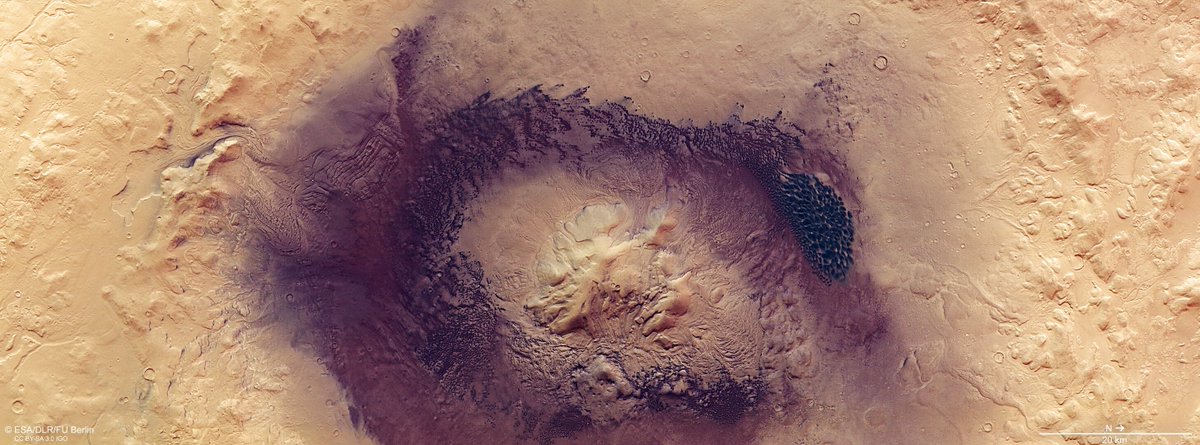 https://abs.twimg.com/emoji/v2/... draggable="false" alt="🔴" title="Red circle" aria-label="Emoji: Red circle"> From upper left to bottom right: Perspective view of North Polar ice cap https://abs.twimg.com/emoji/v2/... draggable="false" alt="❄️" title="Snowflake" aria-label="Emoji: Snowflake">; area near north pole; Olympus Mons Caldera https://abs.twimg.com/emoji/v2/... draggable="false" alt="🌋" title="Volcano" aria-label="Emoji: Volcano">; Dark dunes of Moreux crater (all https://abs.twimg.com/emoji/v2/... draggable="false" alt="📷" title="Camera" aria-label="Emoji: Camera">: ESA/DLR/FU Berlin)" title="I& #39;ll end with some of my favourite photos from HRSC, bc everyone loves pictures of Mars right? https://abs.twimg.com/emoji/v2/... draggable="false" alt="😉" title="Winking face" aria-label="Emoji: Winking face">https://abs.twimg.com/emoji/v2/... draggable="false" alt="🔴" title="Red circle" aria-label="Emoji: Red circle"> From upper left to bottom right: Perspective view of North Polar ice cap https://abs.twimg.com/emoji/v2/... draggable="false" alt="❄️" title="Snowflake" aria-label="Emoji: Snowflake">; area near north pole; Olympus Mons Caldera https://abs.twimg.com/emoji/v2/... draggable="false" alt="🌋" title="Volcano" aria-label="Emoji: Volcano">; Dark dunes of Moreux crater (all https://abs.twimg.com/emoji/v2/... draggable="false" alt="📷" title="Camera" aria-label="Emoji: Camera">: ESA/DLR/FU Berlin)">
https://abs.twimg.com/emoji/v2/... draggable="false" alt="🔴" title="Red circle" aria-label="Emoji: Red circle"> From upper left to bottom right: Perspective view of North Polar ice cap https://abs.twimg.com/emoji/v2/... draggable="false" alt="❄️" title="Snowflake" aria-label="Emoji: Snowflake">; area near north pole; Olympus Mons Caldera https://abs.twimg.com/emoji/v2/... draggable="false" alt="🌋" title="Volcano" aria-label="Emoji: Volcano">; Dark dunes of Moreux crater (all https://abs.twimg.com/emoji/v2/... draggable="false" alt="📷" title="Camera" aria-label="Emoji: Camera">: ESA/DLR/FU Berlin)" title="I& #39;ll end with some of my favourite photos from HRSC, bc everyone loves pictures of Mars right? https://abs.twimg.com/emoji/v2/... draggable="false" alt="😉" title="Winking face" aria-label="Emoji: Winking face">https://abs.twimg.com/emoji/v2/... draggable="false" alt="🔴" title="Red circle" aria-label="Emoji: Red circle"> From upper left to bottom right: Perspective view of North Polar ice cap https://abs.twimg.com/emoji/v2/... draggable="false" alt="❄️" title="Snowflake" aria-label="Emoji: Snowflake">; area near north pole; Olympus Mons Caldera https://abs.twimg.com/emoji/v2/... draggable="false" alt="🌋" title="Volcano" aria-label="Emoji: Volcano">; Dark dunes of Moreux crater (all https://abs.twimg.com/emoji/v2/... draggable="false" alt="📷" title="Camera" aria-label="Emoji: Camera">: ESA/DLR/FU Berlin)">
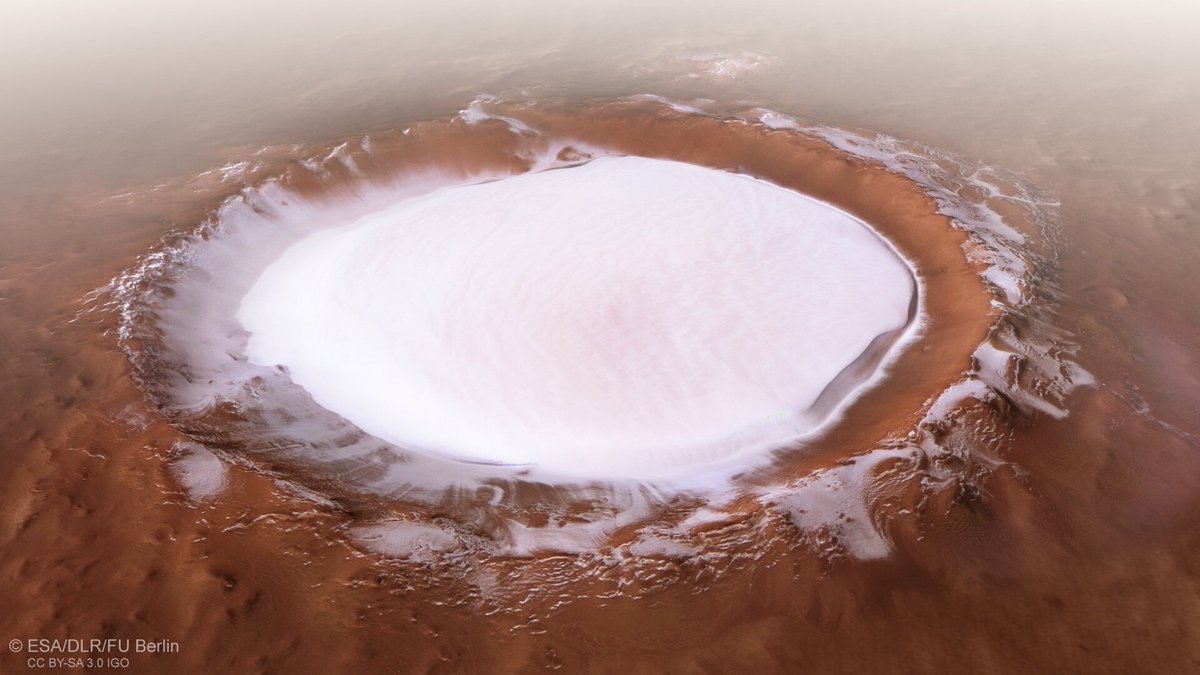 From upper left to bottom right: Perspective view of Korolev crater; view of Deuteronilus Mensae showing evidence for glacial activity https://abs.twimg.com/emoji/v2/... draggable="false" alt="❄️" title="Snowflake" aria-label="Emoji: Snowflake">; Perspective view in Noctis Labyrinthus; Phobos (one of the Martian moons) (https://abs.twimg.com/emoji/v2/... draggable="false" alt="📷" title="Camera" aria-label="Emoji: Camera">: ESA/DLR/FU Berlin)" title="More HRSC #MarsExpress photo highlights! https://abs.twimg.com/emoji/v2/... draggable="false" alt="📸" title="Camera with flash" aria-label="Emoji: Camera with flash"> From upper left to bottom right: Perspective view of Korolev crater; view of Deuteronilus Mensae showing evidence for glacial activity https://abs.twimg.com/emoji/v2/... draggable="false" alt="❄️" title="Snowflake" aria-label="Emoji: Snowflake">; Perspective view in Noctis Labyrinthus; Phobos (one of the Martian moons) (https://abs.twimg.com/emoji/v2/... draggable="false" alt="📷" title="Camera" aria-label="Emoji: Camera">: ESA/DLR/FU Berlin)">
From upper left to bottom right: Perspective view of Korolev crater; view of Deuteronilus Mensae showing evidence for glacial activity https://abs.twimg.com/emoji/v2/... draggable="false" alt="❄️" title="Snowflake" aria-label="Emoji: Snowflake">; Perspective view in Noctis Labyrinthus; Phobos (one of the Martian moons) (https://abs.twimg.com/emoji/v2/... draggable="false" alt="📷" title="Camera" aria-label="Emoji: Camera">: ESA/DLR/FU Berlin)" title="More HRSC #MarsExpress photo highlights! https://abs.twimg.com/emoji/v2/... draggable="false" alt="📸" title="Camera with flash" aria-label="Emoji: Camera with flash"> From upper left to bottom right: Perspective view of Korolev crater; view of Deuteronilus Mensae showing evidence for glacial activity https://abs.twimg.com/emoji/v2/... draggable="false" alt="❄️" title="Snowflake" aria-label="Emoji: Snowflake">; Perspective view in Noctis Labyrinthus; Phobos (one of the Martian moons) (https://abs.twimg.com/emoji/v2/... draggable="false" alt="📷" title="Camera" aria-label="Emoji: Camera">: ESA/DLR/FU Berlin)">
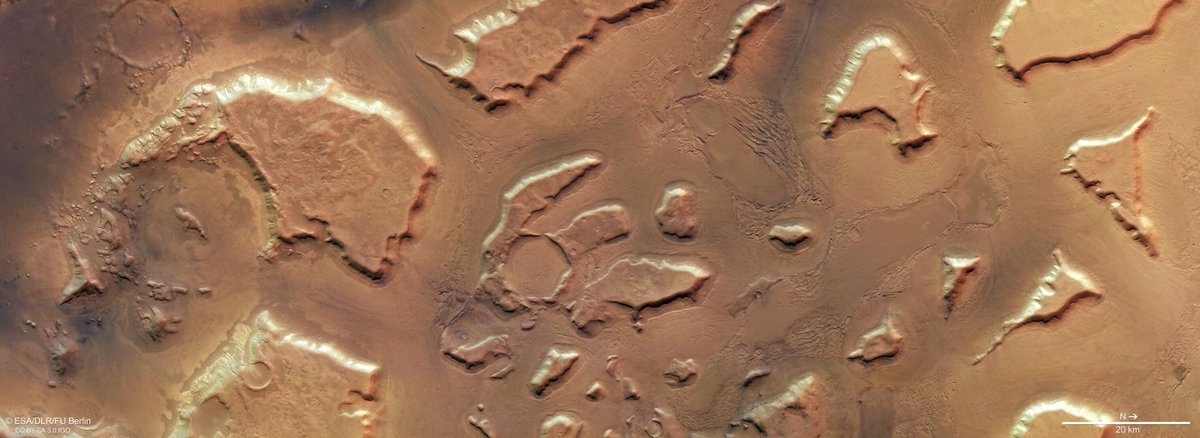 From upper left to bottom right: Perspective view of Korolev crater; view of Deuteronilus Mensae showing evidence for glacial activity https://abs.twimg.com/emoji/v2/... draggable="false" alt="❄️" title="Snowflake" aria-label="Emoji: Snowflake">; Perspective view in Noctis Labyrinthus; Phobos (one of the Martian moons) (https://abs.twimg.com/emoji/v2/... draggable="false" alt="📷" title="Camera" aria-label="Emoji: Camera">: ESA/DLR/FU Berlin)" title="More HRSC #MarsExpress photo highlights! https://abs.twimg.com/emoji/v2/... draggable="false" alt="📸" title="Camera with flash" aria-label="Emoji: Camera with flash"> From upper left to bottom right: Perspective view of Korolev crater; view of Deuteronilus Mensae showing evidence for glacial activity https://abs.twimg.com/emoji/v2/... draggable="false" alt="❄️" title="Snowflake" aria-label="Emoji: Snowflake">; Perspective view in Noctis Labyrinthus; Phobos (one of the Martian moons) (https://abs.twimg.com/emoji/v2/... draggable="false" alt="📷" title="Camera" aria-label="Emoji: Camera">: ESA/DLR/FU Berlin)">
From upper left to bottom right: Perspective view of Korolev crater; view of Deuteronilus Mensae showing evidence for glacial activity https://abs.twimg.com/emoji/v2/... draggable="false" alt="❄️" title="Snowflake" aria-label="Emoji: Snowflake">; Perspective view in Noctis Labyrinthus; Phobos (one of the Martian moons) (https://abs.twimg.com/emoji/v2/... draggable="false" alt="📷" title="Camera" aria-label="Emoji: Camera">: ESA/DLR/FU Berlin)" title="More HRSC #MarsExpress photo highlights! https://abs.twimg.com/emoji/v2/... draggable="false" alt="📸" title="Camera with flash" aria-label="Emoji: Camera with flash"> From upper left to bottom right: Perspective view of Korolev crater; view of Deuteronilus Mensae showing evidence for glacial activity https://abs.twimg.com/emoji/v2/... draggable="false" alt="❄️" title="Snowflake" aria-label="Emoji: Snowflake">; Perspective view in Noctis Labyrinthus; Phobos (one of the Martian moons) (https://abs.twimg.com/emoji/v2/... draggable="false" alt="📷" title="Camera" aria-label="Emoji: Camera">: ESA/DLR/FU Berlin)">
 From upper left to bottom right: Perspective view of Korolev crater; view of Deuteronilus Mensae showing evidence for glacial activity https://abs.twimg.com/emoji/v2/... draggable="false" alt="❄️" title="Snowflake" aria-label="Emoji: Snowflake">; Perspective view in Noctis Labyrinthus; Phobos (one of the Martian moons) (https://abs.twimg.com/emoji/v2/... draggable="false" alt="📷" title="Camera" aria-label="Emoji: Camera">: ESA/DLR/FU Berlin)" title="More HRSC #MarsExpress photo highlights! https://abs.twimg.com/emoji/v2/... draggable="false" alt="📸" title="Camera with flash" aria-label="Emoji: Camera with flash"> From upper left to bottom right: Perspective view of Korolev crater; view of Deuteronilus Mensae showing evidence for glacial activity https://abs.twimg.com/emoji/v2/... draggable="false" alt="❄️" title="Snowflake" aria-label="Emoji: Snowflake">; Perspective view in Noctis Labyrinthus; Phobos (one of the Martian moons) (https://abs.twimg.com/emoji/v2/... draggable="false" alt="📷" title="Camera" aria-label="Emoji: Camera">: ESA/DLR/FU Berlin)">
From upper left to bottom right: Perspective view of Korolev crater; view of Deuteronilus Mensae showing evidence for glacial activity https://abs.twimg.com/emoji/v2/... draggable="false" alt="❄️" title="Snowflake" aria-label="Emoji: Snowflake">; Perspective view in Noctis Labyrinthus; Phobos (one of the Martian moons) (https://abs.twimg.com/emoji/v2/... draggable="false" alt="📷" title="Camera" aria-label="Emoji: Camera">: ESA/DLR/FU Berlin)" title="More HRSC #MarsExpress photo highlights! https://abs.twimg.com/emoji/v2/... draggable="false" alt="📸" title="Camera with flash" aria-label="Emoji: Camera with flash"> From upper left to bottom right: Perspective view of Korolev crater; view of Deuteronilus Mensae showing evidence for glacial activity https://abs.twimg.com/emoji/v2/... draggable="false" alt="❄️" title="Snowflake" aria-label="Emoji: Snowflake">; Perspective view in Noctis Labyrinthus; Phobos (one of the Martian moons) (https://abs.twimg.com/emoji/v2/... draggable="false" alt="📷" title="Camera" aria-label="Emoji: Camera">: ESA/DLR/FU Berlin)">
 From upper left to bottom right: Perspective view of Korolev crater; view of Deuteronilus Mensae showing evidence for glacial activity https://abs.twimg.com/emoji/v2/... draggable="false" alt="❄️" title="Snowflake" aria-label="Emoji: Snowflake">; Perspective view in Noctis Labyrinthus; Phobos (one of the Martian moons) (https://abs.twimg.com/emoji/v2/... draggable="false" alt="📷" title="Camera" aria-label="Emoji: Camera">: ESA/DLR/FU Berlin)" title="More HRSC #MarsExpress photo highlights! https://abs.twimg.com/emoji/v2/... draggable="false" alt="📸" title="Camera with flash" aria-label="Emoji: Camera with flash"> From upper left to bottom right: Perspective view of Korolev crater; view of Deuteronilus Mensae showing evidence for glacial activity https://abs.twimg.com/emoji/v2/... draggable="false" alt="❄️" title="Snowflake" aria-label="Emoji: Snowflake">; Perspective view in Noctis Labyrinthus; Phobos (one of the Martian moons) (https://abs.twimg.com/emoji/v2/... draggable="false" alt="📷" title="Camera" aria-label="Emoji: Camera">: ESA/DLR/FU Berlin)">
From upper left to bottom right: Perspective view of Korolev crater; view of Deuteronilus Mensae showing evidence for glacial activity https://abs.twimg.com/emoji/v2/... draggable="false" alt="❄️" title="Snowflake" aria-label="Emoji: Snowflake">; Perspective view in Noctis Labyrinthus; Phobos (one of the Martian moons) (https://abs.twimg.com/emoji/v2/... draggable="false" alt="📷" title="Camera" aria-label="Emoji: Camera">: ESA/DLR/FU Berlin)" title="More HRSC #MarsExpress photo highlights! https://abs.twimg.com/emoji/v2/... draggable="false" alt="📸" title="Camera with flash" aria-label="Emoji: Camera with flash"> From upper left to bottom right: Perspective view of Korolev crater; view of Deuteronilus Mensae showing evidence for glacial activity https://abs.twimg.com/emoji/v2/... draggable="false" alt="❄️" title="Snowflake" aria-label="Emoji: Snowflake">; Perspective view in Noctis Labyrinthus; Phobos (one of the Martian moons) (https://abs.twimg.com/emoji/v2/... draggable="false" alt="📷" title="Camera" aria-label="Emoji: Camera">: ESA/DLR/FU Berlin)">


